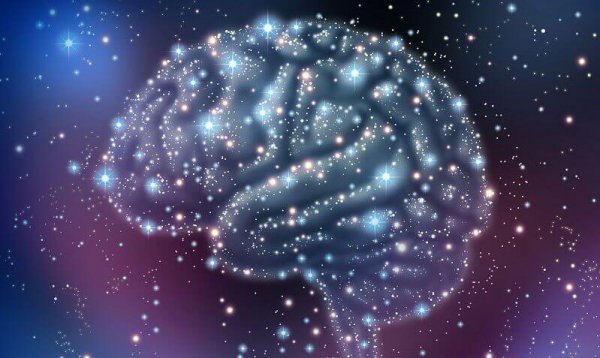What Goes on in your Brain during an Orgasm?


Written and verified by the psychologist Gema Sánchez Cuevas
There are a lot of brain regions and structures that activate during the physical and sexual stimulation stages, and during climax.
When they get bombarded with nerve sensations from the genital area they stimulate the brain’s reward circuits. And they’re also the reason you experience orgasms, along with everything that comes with it.

The human sexual response cycle
According to the Masters and Johnson models, we can divide people’s sexual responses into four very different stages.
- Excitement: it’s the moment when genital vasocongestion happens. That is, it’s the beginning of the sexual response. This is when men experience erections, lubrication, and the elevation of their penis. And for women it’s when they experience lubrication and the swelling of their clitoris.
- Plateau: this only happens if the stimulation continues. With men there’s an added growth in their penis and testicles. On top of that, their heart rate increases, their body temperature goes up, their respiratory rate goes up, and they experience more muscle tension. In women, there’s more vasocongestion, a decrease in the outer radius of the vagina, and a swelling of the clitoris. Their other physiological changes are similar to men’s
- Orgasm: this is the moment with the most general physiological activity, and a lot of subjective sensations of extraordinary pleasure. Men experience contractions in their sphincter, prostate, and the muscles in their penis. Along with ejaculation and the release of semen, their orgasms usually last between 3-10 seconds. With women there’s a series of rhythmic contractions in their vagina, uterus, pelvic muscles, and anus. Their orgasms can last up to twenty seconds.
- Resolution: this is the return to baseline physiological conditions. This is when the so-called refractory period happens for men, where they physically can’t have another orgasm.
The nervous system, the brain, and the orgasm
Even though we just mentioned all those other physical reactions, the organ that has total control over whether or not you have an orgasm is your brain.
Your brain also has a faithful companion: the rest of the nervous system. Without nervous impulses being sent to your spinal cord and brain you wouldn’t have orgasms. So now we’ll look at what happens in your brain when you have one.
The nerve endings that take part in an orgasm
There’s a huge amount of nerves in the genital regions. These nerves send information to your brain about what you’re experiencing. Each of these nerve endings causes different effects inside us.
Even the clitoris by itself has more than 8,000 nerve endings! So just imagine the heaps of different sensations women can have, and the amount of processes going on in your brain during an orgasm!
These genital nerves communicate with other, bigger ones. And then those send that information to your dorsal spine. From there they go to your spinal cord and continue on to your brain. The nerves the play the biggest part when it comes to transmitting an orgasm are the:
- Hypogastric: it sends signals from the uterus (in women) and the prostate (in men).
- Pudendum: it sends signals from the uterus (in women) and the prostate (in men).
- Vagus: it sends signals from the cervix, uterus, and vagina.

The brain pleasure circuit
When the excitement stage begins, your brain starts to send blood to your sexual organs. That’s a reflection of sexual, physical, and psychological stimulation, which the parasympathetic part of your nervous system controls. That’s why you have to be relaxed.
Heart rate and respiratory rate will go up bit by bit in both men and women. In this case (now during the plateau phase), there’s a lot of sympathetic activity that produces significant physiological changes which are similar for both sexes.
And at the same time, like you’ve seen, the nerve endings in your genital regions and other parts of your body start sending signs to your brain pleasure circuit.
This is also known as your brain’s reward system. It’s the mechanism that deals with labeling a behavior as pleasurable or motivating. If the stimulation continues, many different structures in this brain circuit will activate.
Here are some of those structures: the amygdala (emotional regulation), the nucleus accumbens (dopamine release), the cerebellum (muscle control), and the pituitary gland (endorphin and oxytocin release).
Activation of other brain regions
It’s not just your brain’s reward system, though. Using a scanner, scientists have been able to see how specific parts of your brain act during an orgasm.
Thanks to this research, which has lasted over 30 years, they’ve discovered that brain activity is very similar for both sexes, and there aren’t major differences in their sexual response.
In both cases there’s an inhibition of the lateral orbitofrontal cortex, which is the part of the brain that deals with reason and control. So what the brain does during an orgasm is completely turn that region off.
But women have a lot more brain regions that pause than men do. That might explain the difference in how long the intense feeling of pleasure lasts for both sexes.
In women there’s also an activation of the central gray matter, which is what sparks our fight or fight response. It also stimulates the cortex, which has to do with sensations of pain. That might mean there’s a connection between a feeling of pain and a feeling of pleasure.
And there was also a study where they figured out the exact part of the brain that controls our orgasms. It’s the dorsolateral pontine tegmentum, which is in the brain stem.
The research concluded that it’s the region responsible for ejaculation and orgasm, without any difference between the sexes. Interesting, right?
There are a lot of brain regions and structures that activate during the physical and sexual stimulation stages, and during climax.
When they get bombarded with nerve sensations from the genital area they stimulate the brain’s reward circuits. And they’re also the reason you experience orgasms, along with everything that comes with it.

The human sexual response cycle
According to the Masters and Johnson models, we can divide people’s sexual responses into four very different stages.
- Excitement: it’s the moment when genital vasocongestion happens. That is, it’s the beginning of the sexual response. This is when men experience erections, lubrication, and the elevation of their penis. And for women it’s when they experience lubrication and the swelling of their clitoris.
- Plateau: this only happens if the stimulation continues. With men there’s an added growth in their penis and testicles. On top of that, their heart rate increases, their body temperature goes up, their respiratory rate goes up, and they experience more muscle tension. In women, there’s more vasocongestion, a decrease in the outer radius of the vagina, and a swelling of the clitoris. Their other physiological changes are similar to men’s
- Orgasm: this is the moment with the most general physiological activity, and a lot of subjective sensations of extraordinary pleasure. Men experience contractions in their sphincter, prostate, and the muscles in their penis. Along with ejaculation and the release of semen, their orgasms usually last between 3-10 seconds. With women there’s a series of rhythmic contractions in their vagina, uterus, pelvic muscles, and anus. Their orgasms can last up to twenty seconds.
- Resolution: this is the return to baseline physiological conditions. This is when the so-called refractory period happens for men, where they physically can’t have another orgasm.
The nervous system, the brain, and the orgasm
Even though we just mentioned all those other physical reactions, the organ that has total control over whether or not you have an orgasm is your brain.
Your brain also has a faithful companion: the rest of the nervous system. Without nervous impulses being sent to your spinal cord and brain you wouldn’t have orgasms. So now we’ll look at what happens in your brain when you have one.
The nerve endings that take part in an orgasm
There’s a huge amount of nerves in the genital regions. These nerves send information to your brain about what you’re experiencing. Each of these nerve endings causes different effects inside us.
Even the clitoris by itself has more than 8,000 nerve endings! So just imagine the heaps of different sensations women can have, and the amount of processes going on in your brain during an orgasm!
These genital nerves communicate with other, bigger ones. And then those send that information to your dorsal spine. From there they go to your spinal cord and continue on to your brain. The nerves the play the biggest part when it comes to transmitting an orgasm are the:
- Hypogastric: it sends signals from the uterus (in women) and the prostate (in men).
- Pudendum: it sends signals from the uterus (in women) and the prostate (in men).
- Vagus: it sends signals from the cervix, uterus, and vagina.

The brain pleasure circuit
When the excitement stage begins, your brain starts to send blood to your sexual organs. That’s a reflection of sexual, physical, and psychological stimulation, which the parasympathetic part of your nervous system controls. That’s why you have to be relaxed.
Heart rate and respiratory rate will go up bit by bit in both men and women. In this case (now during the plateau phase), there’s a lot of sympathetic activity that produces significant physiological changes which are similar for both sexes.
And at the same time, like you’ve seen, the nerve endings in your genital regions and other parts of your body start sending signs to your brain pleasure circuit.
This is also known as your brain’s reward system. It’s the mechanism that deals with labeling a behavior as pleasurable or motivating. If the stimulation continues, many different structures in this brain circuit will activate.
Here are some of those structures: the amygdala (emotional regulation), the nucleus accumbens (dopamine release), the cerebellum (muscle control), and the pituitary gland (endorphin and oxytocin release).
Activation of other brain regions
It’s not just your brain’s reward system, though. Using a scanner, scientists have been able to see how specific parts of your brain act during an orgasm.
Thanks to this research, which has lasted over 30 years, they’ve discovered that brain activity is very similar for both sexes, and there aren’t major differences in their sexual response.
In both cases there’s an inhibition of the lateral orbitofrontal cortex, which is the part of the brain that deals with reason and control. So what the brain does during an orgasm is completely turn that region off.
But women have a lot more brain regions that pause than men do. That might explain the difference in how long the intense feeling of pleasure lasts for both sexes.
In women there’s also an activation of the central gray matter, which is what sparks our fight or fight response. It also stimulates the cortex, which has to do with sensations of pain. That might mean there’s a connection between a feeling of pain and a feeling of pleasure.
And there was also a study where they figured out the exact part of the brain that controls our orgasms. It’s the dorsolateral pontine tegmentum, which is in the brain stem.
The research concluded that it’s the region responsible for ejaculation and orgasm, without any difference between the sexes. Interesting, right?
This text is provided for informational purposes only and does not replace consultation with a professional. If in doubt, consult your specialist.







